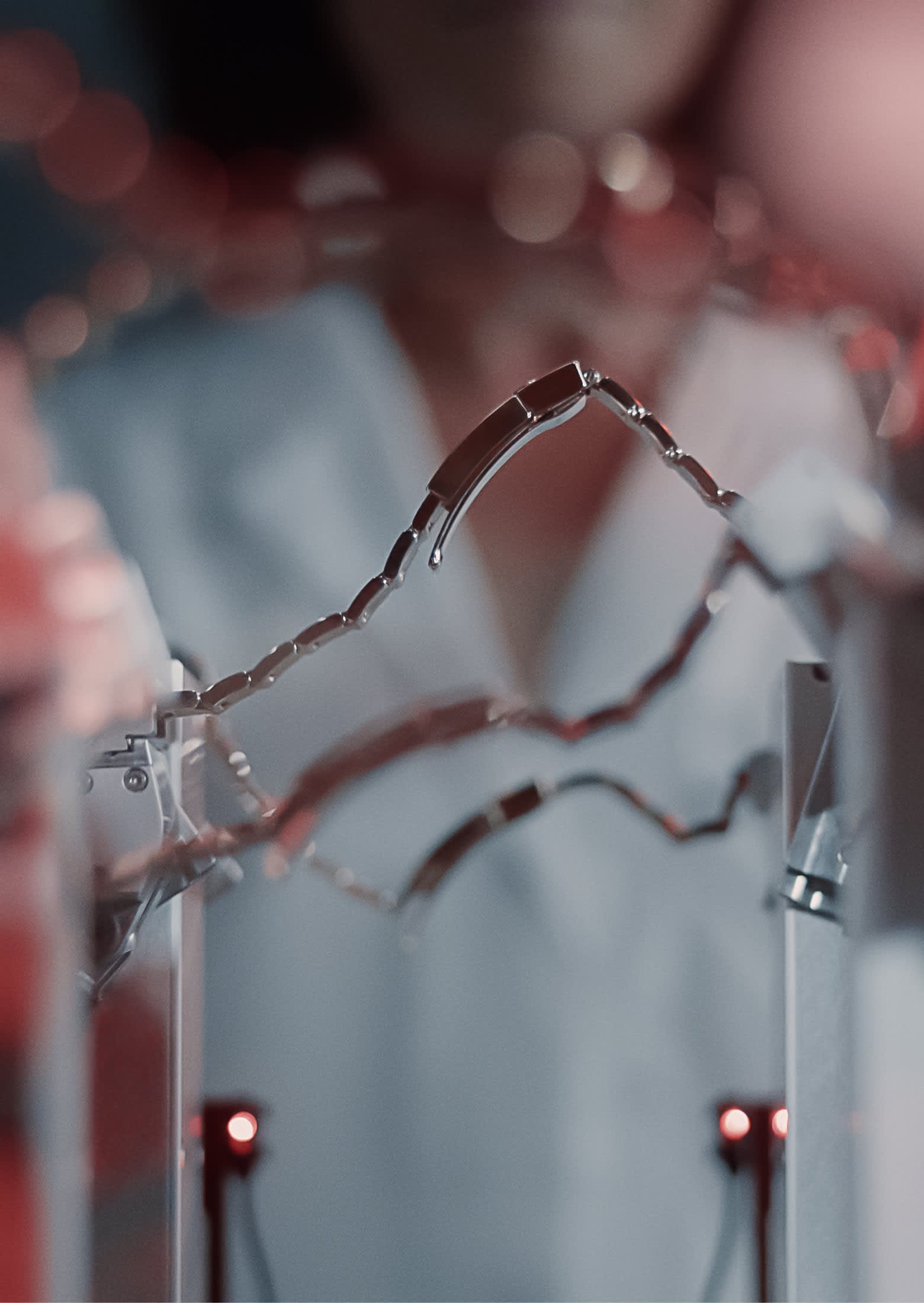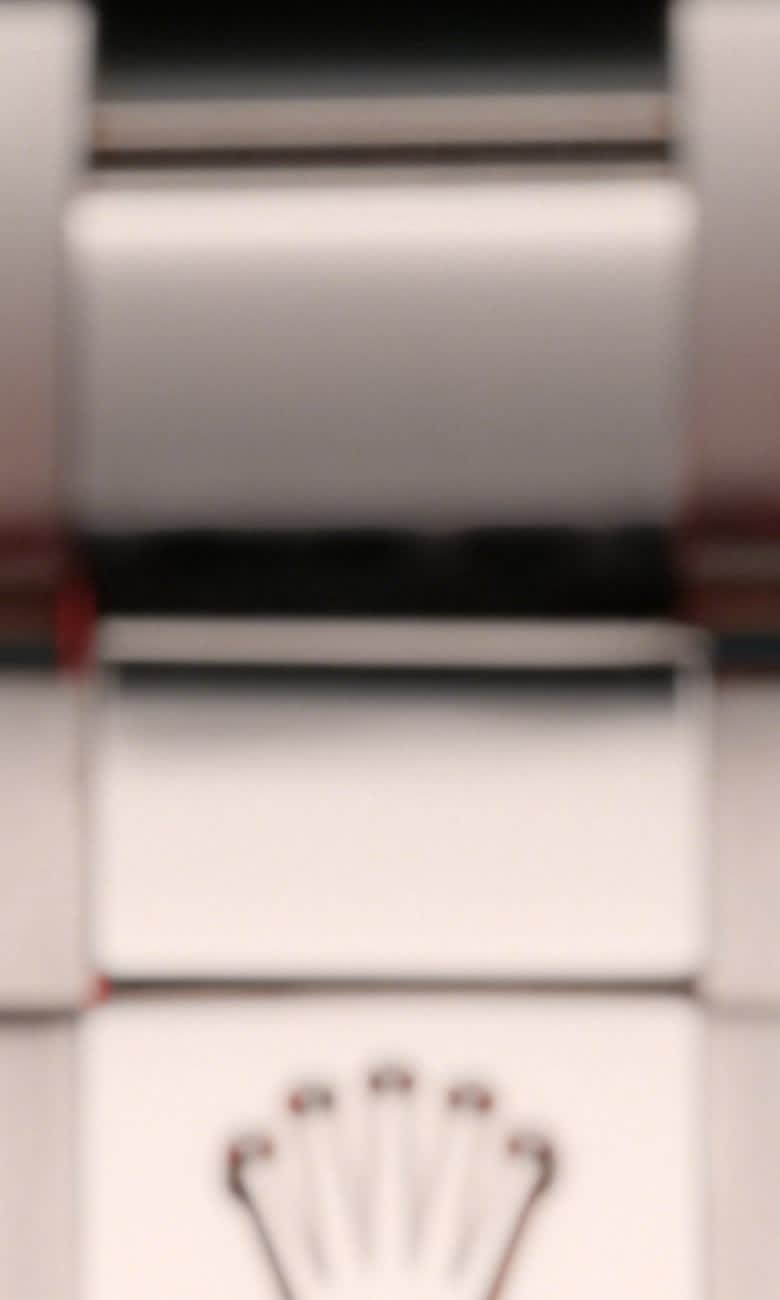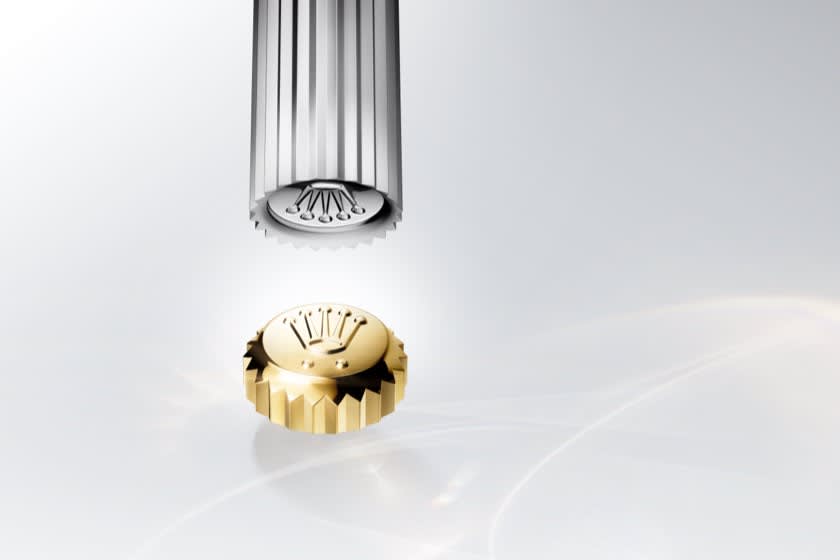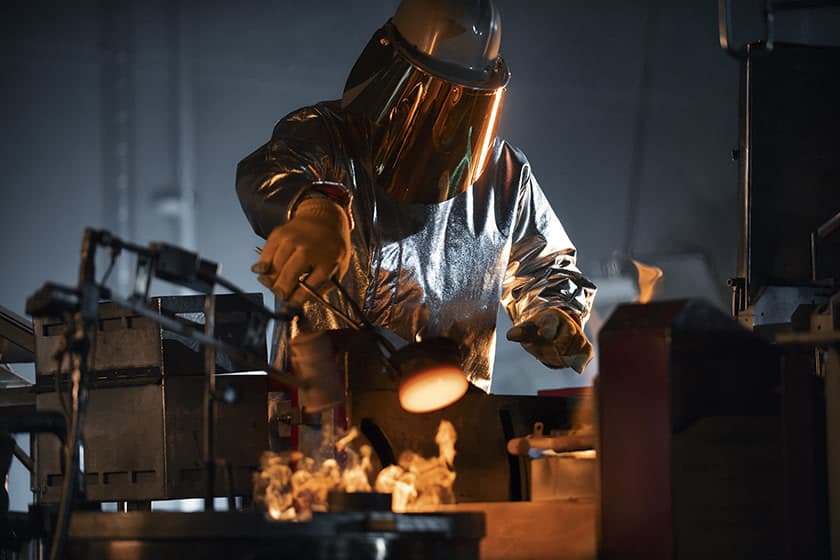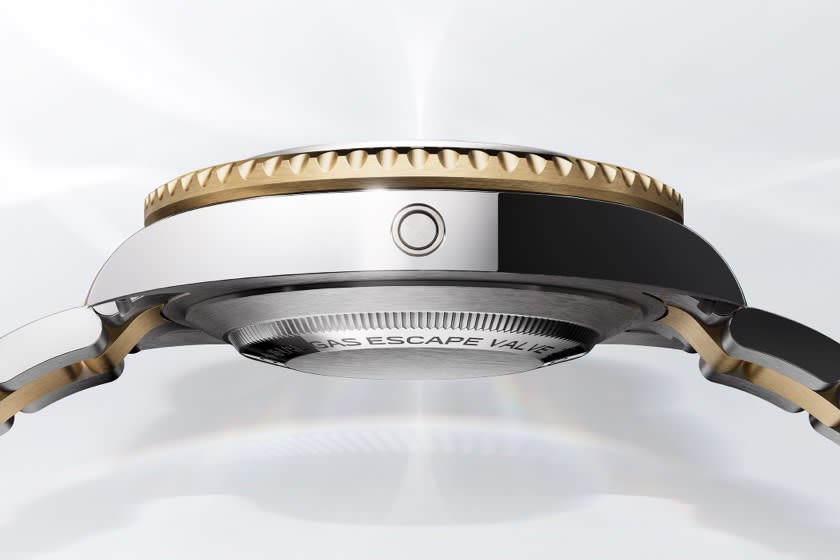One tirelessly shakes the bracelets. Another continuously opens and closes the clasps. One subjects the watches to a pressure of 4.5 metric tons. Another drops them from twenty different positions and heights. One immerses them in salt and chlorine. Another propels abrasive sand onto them. One heats them to one extreme while another freezes them at the other. All of these, and more, test the watch’s mettle further than anything it may ever have to endure. But we do not stop at that.
